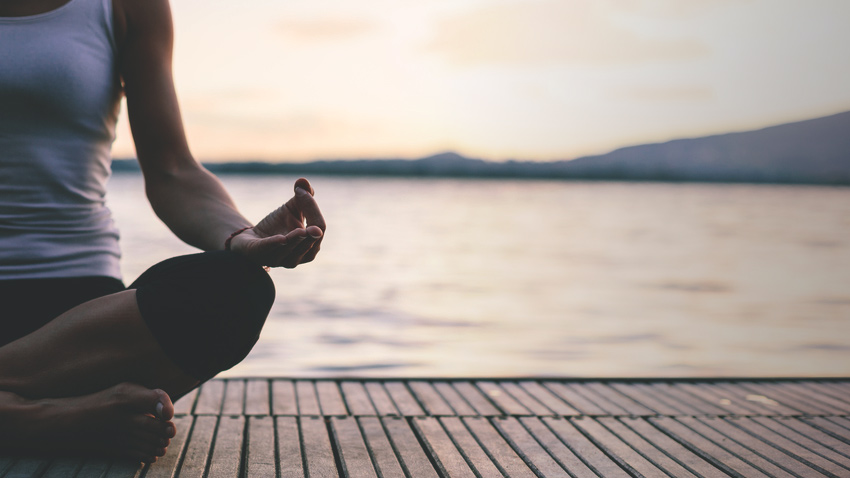Open Inner Peace: A Comprehensive Overview on How to Meditate?
Just How to Meditate: A Detailed Approach to Achieving Mindfulness and Tranquility
Meditation acts as an effective tool for accomplishing mindfulness and psychological calm in a hectic globe. By understanding the basic principles and methods involved in reflection, people can cultivate a technique that enhances their total well-being. This conversation will detail vital actions, from developing a conducive environment to integrating reflection right into day-to-day regimens. As we explore these components, it ends up being clear that the journey to mindfulness is not simply concerning the act of resting in silence, yet rather regarding cultivating a much deeper link with oneself and the globe around us. What might this transformation entail?
Recognizing Meditation
Understanding meditation involves realizing its basic principles and techniques, which act as the structure for the method. At its core, reflection is a psychological workout intended at advertising leisure, constructing internal energy, and developing compassion and understanding. The technique motivates individuals to focus their focus, often via strategies such as deep breathing, visualization, or rule repetition.
Meditation can be classified into various designs, consisting of mindfulness, transcendental, and loving-kindness meditation, each with distinct objectives and techniques. Mindfulness meditation emphasizes present-moment recognition and non-judgmental observation of thoughts and sensations, while transcendental reflection includes using specific concepts to transcend normal mind. Loving-kindness reflection concentrates on developing a perspective of love and concern towards oneself and others.
Despite the strategy utilized, the key goal continues to be constant: to grow a much deeper understanding of the mind and its patterns. This self-awareness cultivates psychological durability, quality of idea, and a profound feeling of calm (How to meditate?). By recognizing these methods and concepts, individuals prepared for a successful reflection technique that can dramatically enhance their total well-being
Planning For Your Practice
Prior to starting your meditation technique, it is important to develop an environment favorable to concentrate and relaxation. Select a peaceful room where you are unlikely to be interrupted. This could be a corner of a space, a yard, or any type of location that evokes a sense of tranquility. Ensure that the area is tidy and free of clutter, as a neat setting can help remove the mind.
Consider the lighting, as natural light can enhance your mood and energy. Soft, warm illumination is usually more calming than severe fluorescent lights. Furthermore, select a comfortable temperature, making certain that you are neither too warm neither also cool.
Including components that advertise peace can even more enhance your experience. This might include soft cushions or blankets for comfort, along with calming scents from important oils or incense. It can also be helpful to have a timer established for your reflection session to avoid disturbances from more information clock-watching.
Fundamental Meditation Methods

One more reliable technique is body scan reflection. This entails mentally scanning your body from head to toe, observing any kind of areas of tension or pain and consciously kicking back those muscular tissues. This practice promotes a much deeper link between your body and mind.

Last but not least, loving-kindness meditation concentrates on cultivating concern towards on your own and others. Quietly repeat expressions of a good reputation, improving psychological wellness and interconnectedness. Each of these techniques functions as a foundation for your meditation trip, allowing you to locate the technique that resonates ideal with your personal technique.
Preserving Focus and Mindfulness

Establishing a specialized their website reflection area can boost the ability to preserve mindfulness. A quiet, clean environment decreases disturbances, allowing for deeper immersion in the practice. In addition, establishing a time frame can assist handle assumptions; beginning with much shorter sessions may relieve the shift into longer practices.
Utilizing strategies such as body scanning or observing feelings can likewise reinforce mindfulness. These methods urge experts to remain present and engaged with their physicality, securing their interest in the moment. Regular technique is crucial; the mind builds strength gradually, producing a stronger ability for focus.
Incorporating Meditation Into Day-to-day Live
Integrating meditation right into day-to-day live can transform regular activities right into chances for mindfulness and self-reflection. By integrating mindfulness techniques into usual tasks, people can cultivate a better sense of presence and harmony amidst the numerous hours of daily life.
Begin by determining minutes throughout your day where you can practice and stop briefly mindfulness. Also mundane activities like cleaning recipes or walking can become chances for reflection by routing your attention to the feelings of motion and the audios surrounding you.
Furthermore, alloting devoted times for reflection can enhance its technique. Start with brief sessions, gradually enhancing duration as you come to be more comfy. Usage reminders or signs-- like a particular time of day or a calming sound-- to develop uniformity.
Inevitably, the objective is to weave mindfulness right into the textile of every day life, permitting you to come close to each moment with objective, thus enhancing your overall feeling of wellness and clearness.
Final Thought
In conclusion, effective reflection requires a silent atmosphere, a comfortable placement, and an emphasis on the breath. Regular meditation, also in quick sessions, promotes a much deeper link to the existing moment, ultimately leading to better calmness and mental quality in daily life.
Reflection can be categorized right into various designs, including mindfulness, transcendental, and loving-kindness meditation, each with unique purposes and techniques. Mindfulness reflection highlights present-moment awareness and non-judgmental monitoring of thoughts and feelings, while transcendental reflection includes the usage of specific rules to go beyond common idea processes.With your meditation area prepared, it's time to discover various fundamental reflection strategies that can help cultivate mindfulness and inner tranquility.Continually maintaining focus and mindfulness throughout reflection can be challenging, especially for those new to the method.Developing a dedicated meditation area can improve the capacity to keep mindfulness.